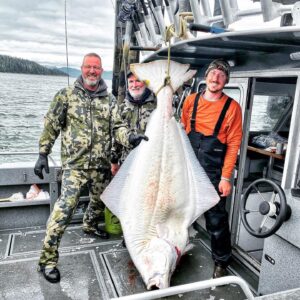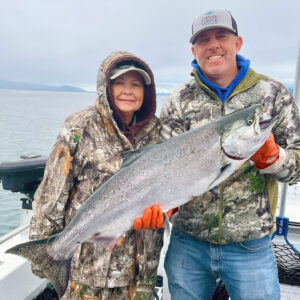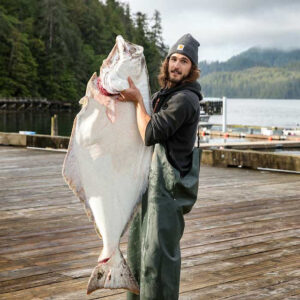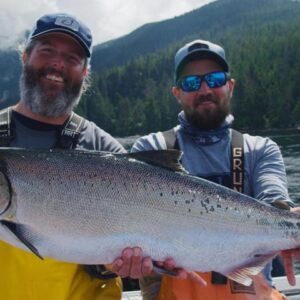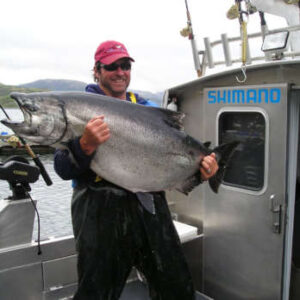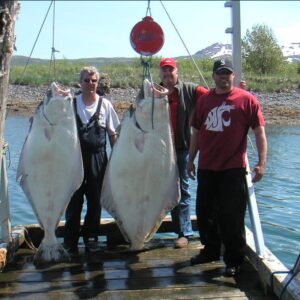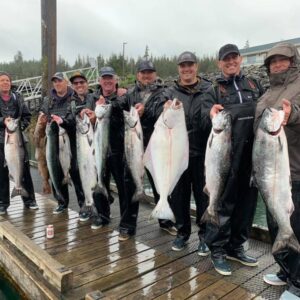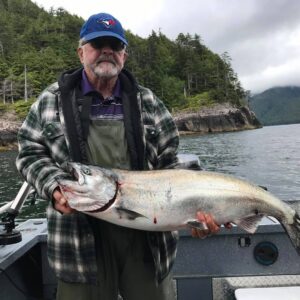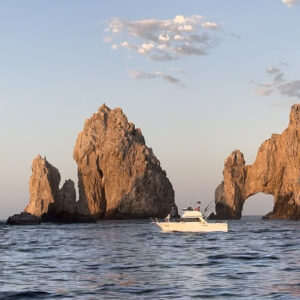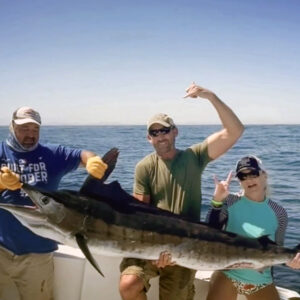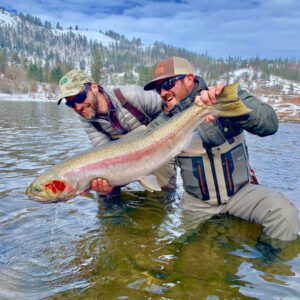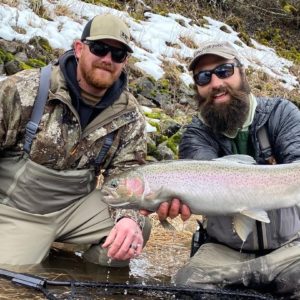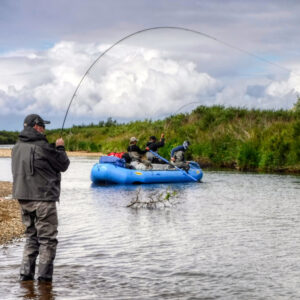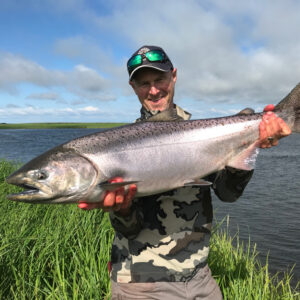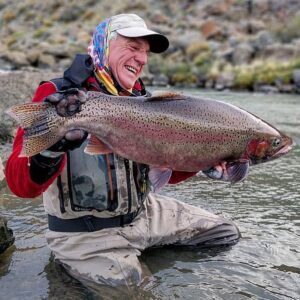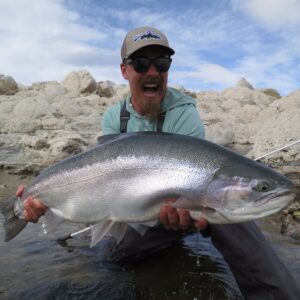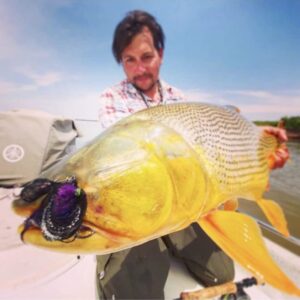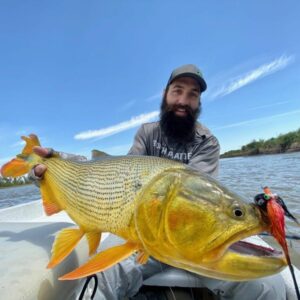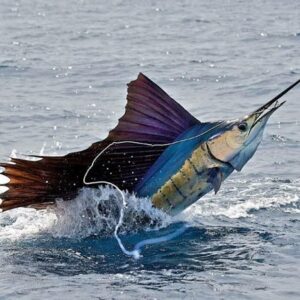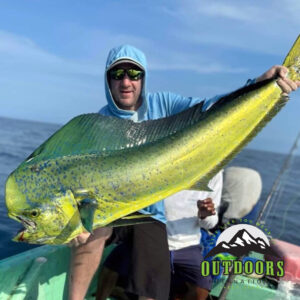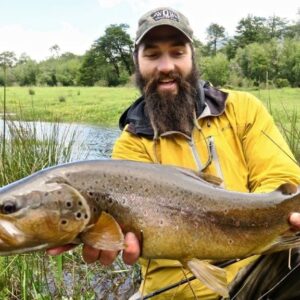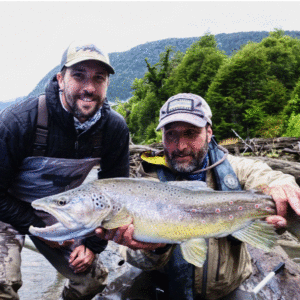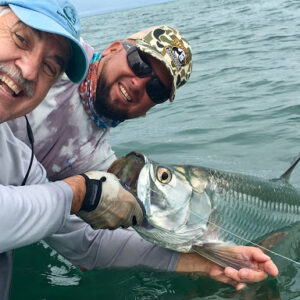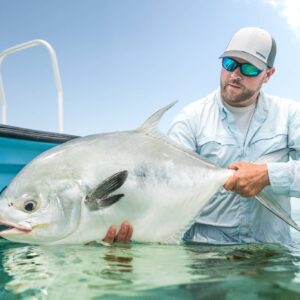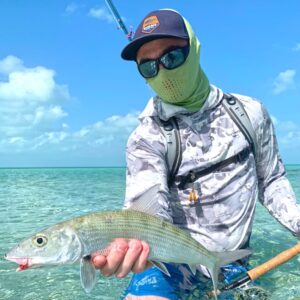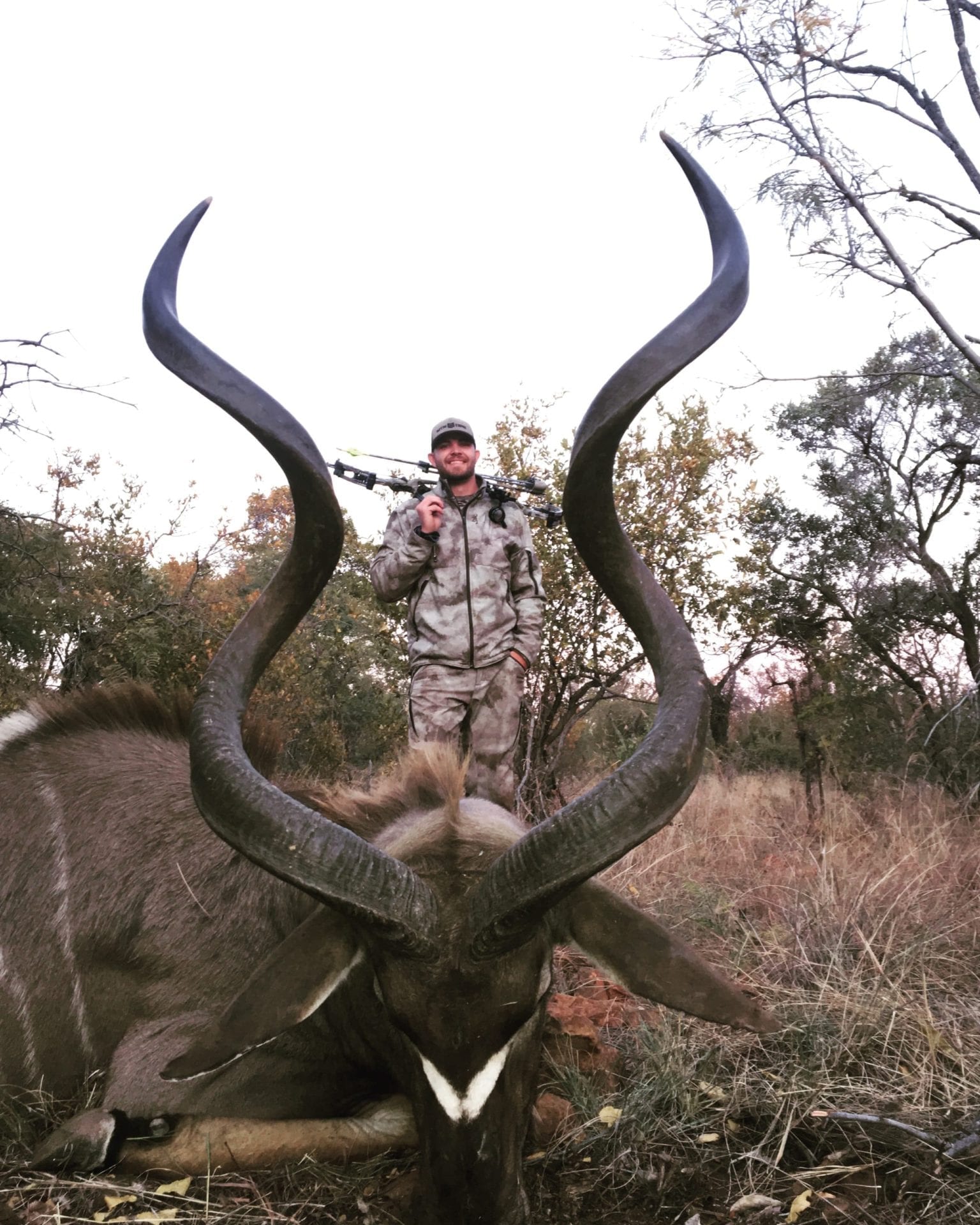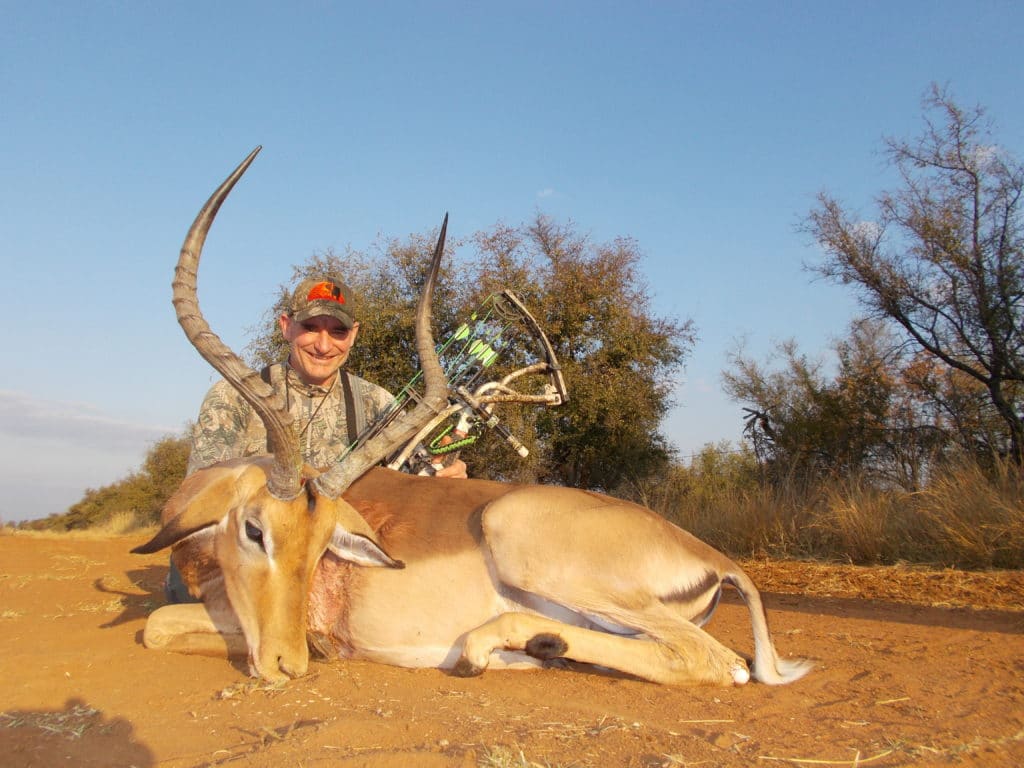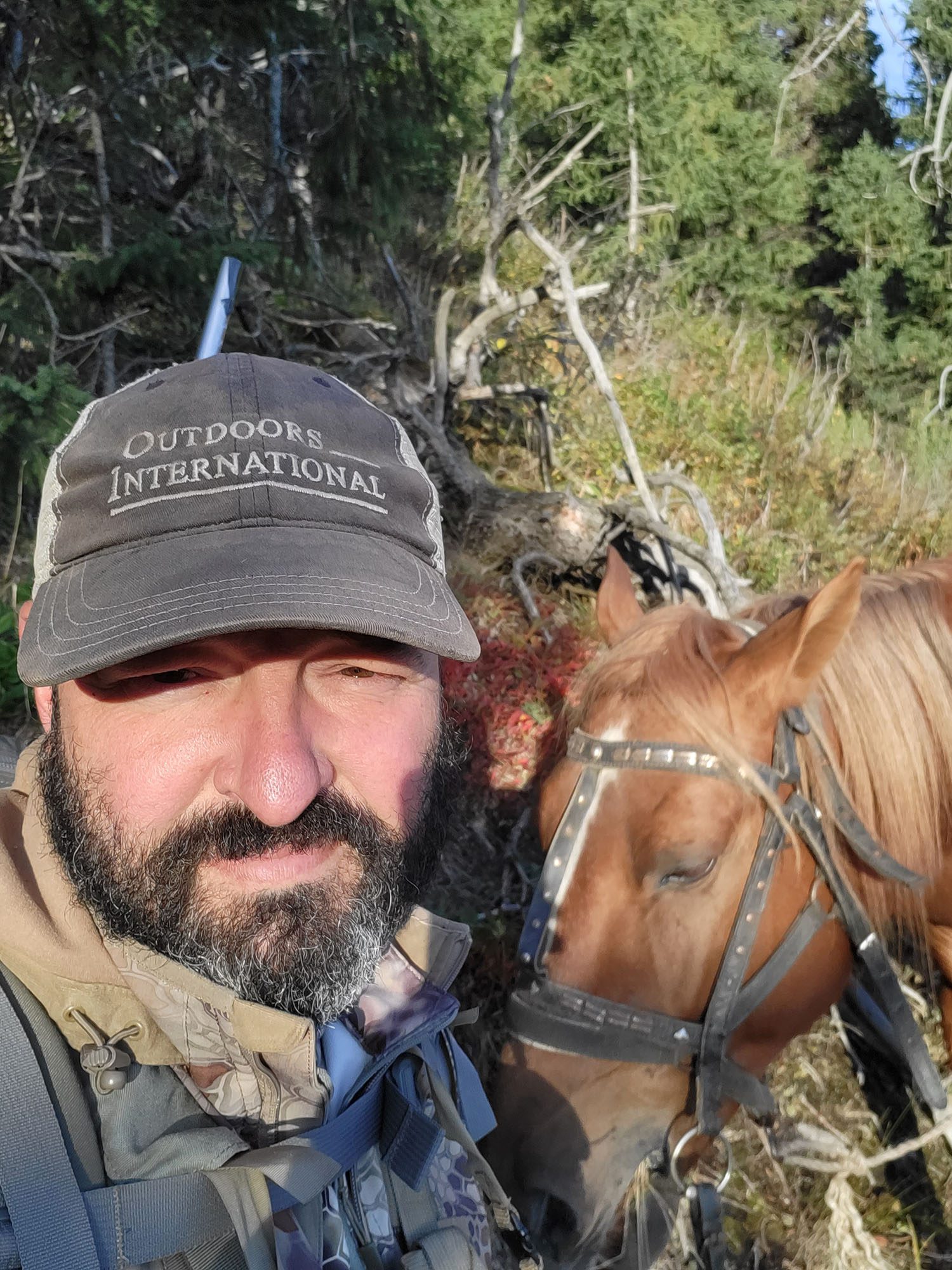Halibut are an unusual game fish that many people have on their bucket list or list of fishing trips they do each year and rightfully so! Everyone knows they are one of the best fish to prepare for the table and the white mild flaky flesh allows you to experiment with many different halibut recipes and cooking methods. I have put together a few interesting facts about halibut.
Halibut Fishing Destinations
Facts about Halibut
The Pacific halibut is within the flounder family and has a few unique characteristics only found in the flounder family. When they hatch from the egg they have an eye on each side of their body and swim like all other fish. Then as the fish grows and after about 6 months one of the eyes migrates to the other side of the body. The juvenile fish begins to swim on its side with both eyes on the same side – the upper side. The top of the halibut is dark brown and mottled to match the ocean floor and the underside is white to match the light from above.
The Halibut Life Cycle
Halibut reach spawning maturity anywhere from 8-15 years old with the females taking a few extra years to mature. Halibut spawn in the winter months from November to March in very deep water ranging from 6-1200 feet! Females will lie up to 4 million eggs depending on their size and maturity. The eggs drift in the ocean currents into the shallow coastal waters before they hatch. These waters offer protection and better nutrition for the juveniles to grow to maturity.
Eating Habits
Juvenile halibut 1-3 years old feed on small crustaceans, plankton and other small organisms. The adult halibut will feed on nearly anything is can fit in its mouth, octopus, crabs, clams, salmon, cod, pollock, flounder, sculpins, lamprey, herring, and other halibut. Needless to say Pacific halibut are the very top of the marine food chain. Predators include killer whales, salmon sharks, sea lions, otters, and of course humans.
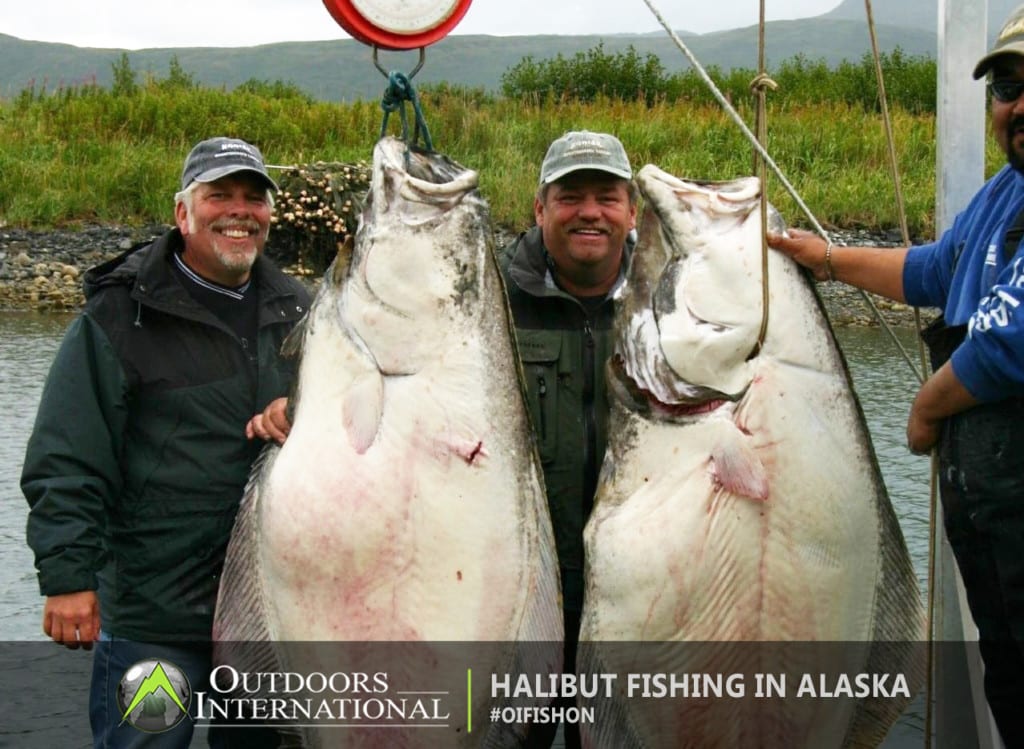
Size and Age
The world record pacific halibut caught on line and reel has a lot of discussion around it.
Halibut are the largest “flatfish” within the flounder family. The males typically won’t grow to be over 100 pounds whereas the females can live longer and grow to 600 pounds or more! This is why some fisheries have restrictions on the size and length of halibut retention. It is important to allow the large “spawner” females to be released back to the depths in order to benefit the future of the fishery. Typically the smaller fish from 20-60 pounds will be the best eating anyways. Halibut have a bone in the ear that can be cut open and you can count the rings to determine the number of years old it is much like the rings of a tree. Halibut are thought to live as old as 50 years.
To count, it must be brought aboard your vessel alive and not be shot and gaffed in the water to pull it aboard.
It is much safer to bring an enormous halibut aboard after it has expired. Currently the record is 459 pounds from Alaska but many bigger fish have been “caught” that didn’t qualify for the hook and line record. In addition many halibut are released each year that would contend with that record. Just last season our outfitter in British Columbia released a fish that measured 7’6”!
Where can you find Pacific Halibut?
Halibut have a very large range from the northern waters of Alaska’s Bering Sea all the way down the coast to California. Typically the better fishing for halibut is farther north from the coastal waters of British Columbia up to Alaska. The populations and size of Pacific halibut in US waters from the coast of Washington to California are fairly low and although you can fish them here certain rules and regulations have been put in place to protect the fishery. The Pacific halibut is much larger than its cousin, the California halibut.
Halibut are found and fished in waters from 50-500 feet and typically live in areas of mud, sand, or gravel bottoms. Mature halibut migrate seasonally into different depths of water. Some have been tagged for research and tracked up to 2,000 miles up and down the Alaskan, British Columbia, and Washington Coast!
Fishing tackle and how to fish for halibut.
Most fishing for halibut will be with a circle hook and bait or a large jig tipped with bait. The circle hook allows the fish to be hooked in the corner of the mouth and not fully swallow the hook, which allows a better survival rate for released halibut. Halibut are professional feeders and will eat anything that looks and smells like food. Common baits are herring, salmon chunks such as tail and head, and octopus.
You will commonly fish heavy weights to get your bait quickly to the bottom and either jig it or let it sit. Often times your guide will chum the water with a chum bag dropped to the bottom. It won’t take more than 30 minutes for the scent to work its way through the water column and bring in fish that are near. You will be ready with your rod and when the first fish hits it’s usually on for the rest of the boat. Halibut often come and go in schools.
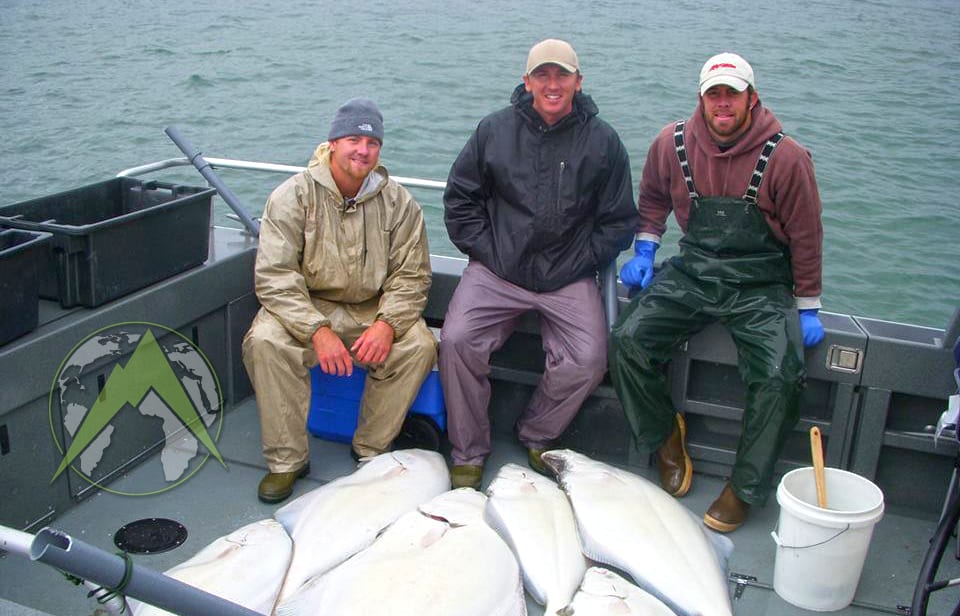
When to fish for halibut
The best time for halibut is the summer seasons from Mid May to Mid September, as the halibut tend to migrate back into shallower waters at this time. The best month in my opinion is June or July, many big fish have made their way into the shallower waters. In addition to halibut the other bottom fishing is good at this time as well as King Salmon. The months of August and September can also be great fishing and you will have the opportunity to combo your halibut trips with Silver Salmon!
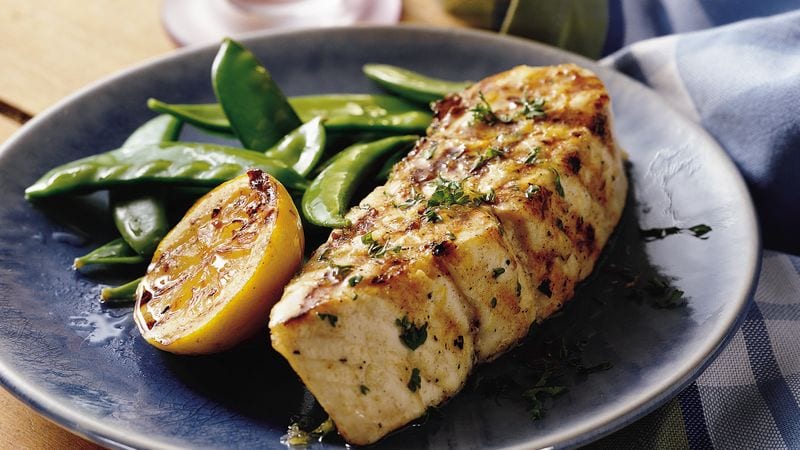
Edible meat yield per fish
So just how much halibut meat can you harvest off of one fish? Each fish will vary slightly in yield but you can expect 50% of the fish weight to be filleted for your enjoyment. Also a delicacy is the halibut cheeks; don’t forget to have your guide cut out the cheeks of the bigger halibut, as this is the best handful of delicious flaky meat you will ever taste!
A halibut fishing trip is a fun experience and great opportunity to pair filling the freezer with a fun and exciting fishing vacation. Many halibut trips are quite economical when you look at the pounds of fresh fish you are bringing home. If you were to buy fresh Alaskan halibut at the market it sells anywhere from 20-28 dollars per pound. Just one three day fishing trip can have you and your family and friends enjoying fresh halibut all winter long!
Are you interested in booking a fishing trip?
Ask For Pricing or More InformationHere are some fishing trips that you might like:
Our team of professional consultants are ready to help you research, book and plan an amazing trip with one of our amazing outfitter partners around the world. Copyright 2005-2025 © Outdoors International™ · All Rights Reserved.
Live Like You Mean It
Contact Us
We've helped thousands of OI clients plan their adventures
I didn't think an experience like this was possible.
This trip, was, for me at least not just a trip, for me it was a real adventure, a real experience. I love the wilderness and this trip afforded me the opportunity to connect with the Alaskan wilderness in ways very few people do. It was an experience I will never forgot in a place I can’t wait to get back to.
Oliver Fischer
The outfitter handled everything perfectly.
We were thankful that Outdoors International hooked us up with a great outfitter because they were able to find us an acceptable alternate on short notice. Overall the two year process to get this float in was seamless and worry free. Just like it should be.
Thank you,
Stan Masneri
What an amazing experience!
The lodge was out of this world! Our rooms, the delicious food, the incredible wildlife and the scenery were amazing. Our photo safari guide was truly exceptional and had us on animals almost constantly. We saw over 30 different species and had some incredible up close experiences. Africa is amazing!
Scott Navares



